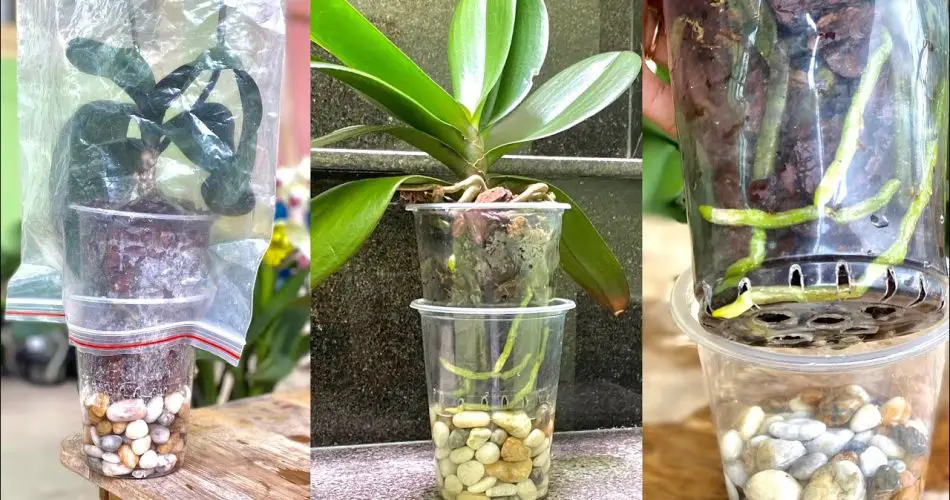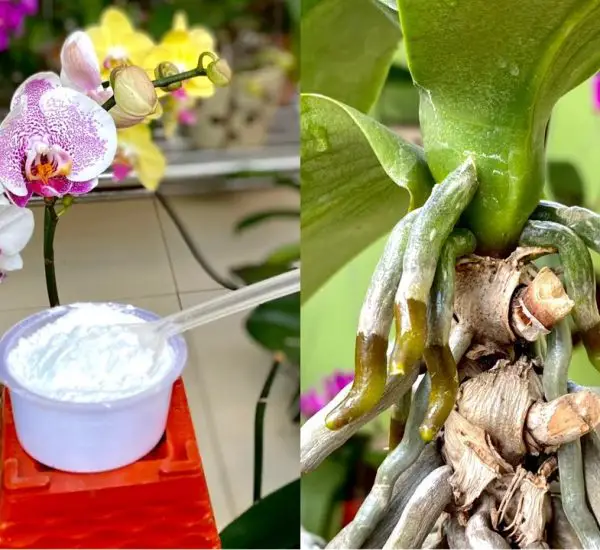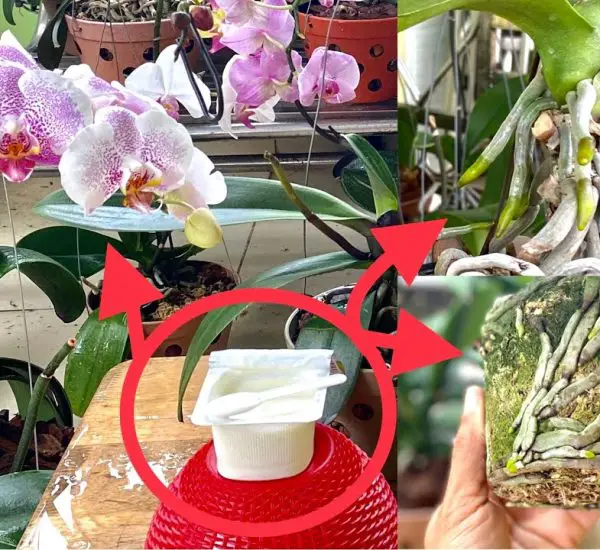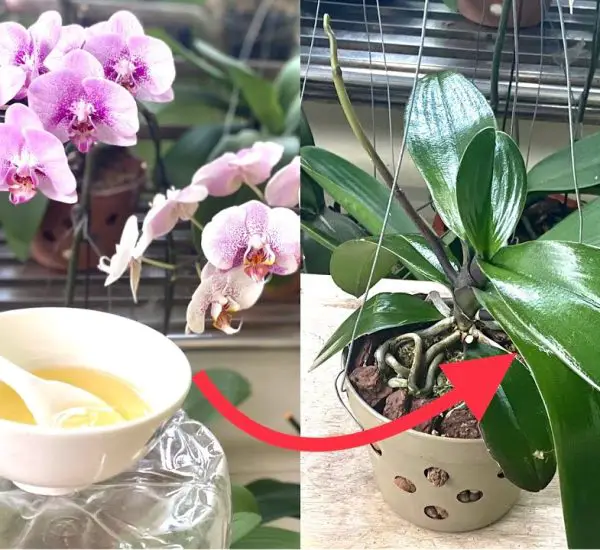Gentle Root Removal for Recovery:
To revive orchids suffering from dehydration, start by delicately removing the dry roots. Long-term water loss often leads to the roots embedding themselves deeply into the growing medium. Gently extract these dehydrated roots while preserving a portion to aid in moisture retention for the potted orchid. Additionally, eliminate any dried petioles and branches, as these areas harbor harmful bacteria and fungi, hindering the plant’s recovery.
Hydrogen Peroxide Disinfection for Healthy Growth:
The next step involves disinfecting the entire orchid using 3% hydrogen peroxide. This solution is applied directly without dilution to ensure thorough disinfection. After applying hydrogen peroxide, allow the leaves to dry completely. Following this, transplant the orchid into a pot filled with pine bark. During transplantation, shake and rotate the plant to enable easy insertion of the pine bark into the roots. Position the base of the plant slightly above the pot’s surface to facilitate moisture retention.
Effective Watering Technique with Pebbles:
Provide adequate water to the orchid by using a plastic cup filled with pebbles. This technique ensures that water levels are maintained without flooding the top of the pebbles. Regularly check and replenish water levels as needed. Additionally, mist the leaves when the water is low to maintain humidity. Place the potted orchid in a location with ample light, covering it with a nylon bag for optimal recovery. The chosen warm and open location aids in the orchid’s quick recuperation.
Successful Recovery and Maintenance:
With these steps, the orchid should exhibit a successful recovery. Strong and healthy leaves, along with the emergence of new shoots, indicate a positive response to the rehabilitation process. The presence of remaining moss contributes to moisture retention, fostering robust root growth. This method provides an effective approach to orchid recovery, ensuring that they regain vitality and thrive.



